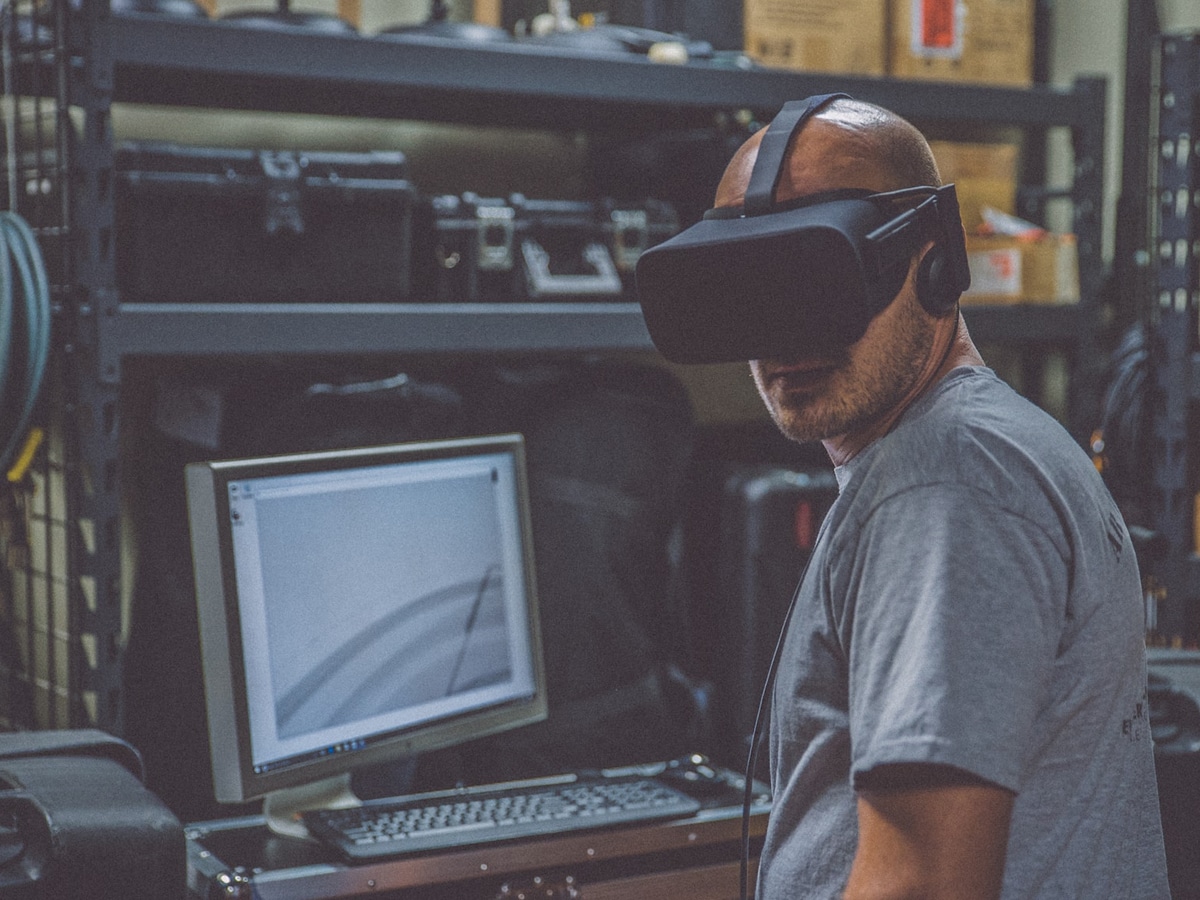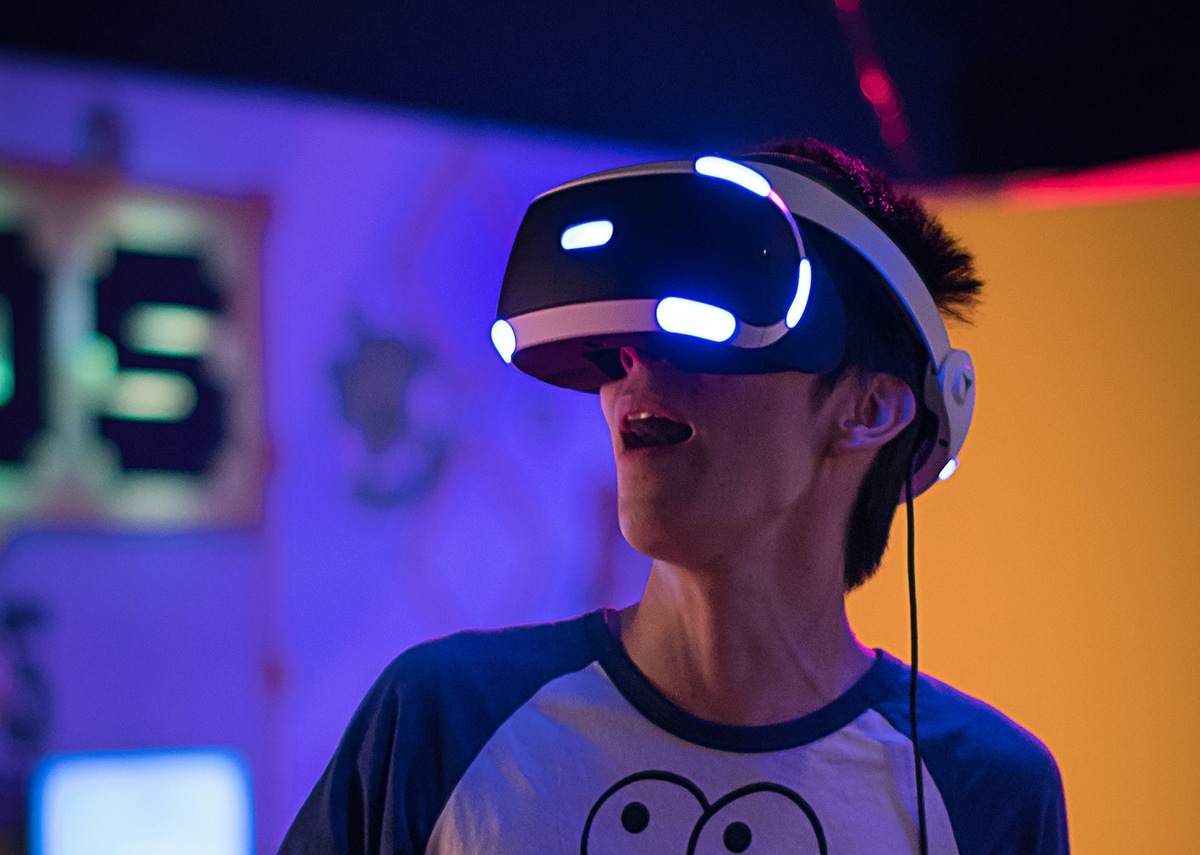After decades of build-up, it seems the age of virtual reality is finally here. At least, that’s what Mark Zuckerberg, founder and CEO of Meta would like you to believe. Some other tech companies are also highlighting the supposed benefits of virtual reality in business. But, IdeaRocket founder, William Gadea advises caution. “VR is massively overhyped,” he says.
Headlines shout about how VR might help people cope with anxiety, detect ADHD symptoms, and “deal with death.” Everyone seems to be looking for ways to use VR from the classroom, to staff meetings, to future moon colonies. Apparently, VR is going to help doctors deliver care and support future astronauts.
But we’re still a far cry from the Enterprise’s Holodeck.
Pros and Cons of Virtual Reality in Business Settings
Slate Magazine called work meetings in VR a “maddening, surreal experience.” The VR environment adds a layer of technical complication that many users aren’t yet equipped to tackle. Remember the rash of video conferencing issues that popped up during the pandemic? If that happened with technologies that had been mainstream for a decade, imagine the chaos VR could cause.
Horizon Worlds, Meta’s virtual office space for businesses, still has fewer than 200,000 total users. That’s not businesses using the office space, but individual users. Even people who work at Meta seem reluctant to actually do business in the virtual spaces they’re creating.
Rahul Mehra, co-founder of Roadcast, told Slate that “Right now there are more disadvantages than advantages.”
While the audio experience may be better than most video conferencing tools, avatars have a limited range of expressions. That can make conversation difficult. It’s also hard to achieve full immersion when you’re looking at floating torsos without legs.
Although VR environments can look real at first glance, the mismatch between visual and physical signals can cause motion sickness and dizziness. Objects in your peripheral vision tend to be blurry, even if the headset is well-calibrated.
And that’s before we get to accessibility issues. A VR headset is a pain if you have glasses. Taking it on and off is difficult and calibrating your vision can be challenging. People with other vision impairments may not be able to use the environment at all.
“It doesn’t convey the human experience,” Gadea said. “For games it might be fine, but for daily work it’s useless. It’s not adding anything to your business interactions.”

Meta Makes Big Bets on VR
Despite all of these challenges, a few tech companies are making big bets on VR. Meta, was the undisputed front-runner by the end of 2022, but that title comes with plenty of caveats.
The Reality Labs unit of Meta has reported billions of dollars in losses. Analysts and investors have cautioned Meta against going all-in on virtual reality. One even wrote an open letter begging Zuckerberg to course correct. But Meta’s CEO doesn’t seem to be listening.
Meanwhile, U.S. sales of VR headsets dropped 2% in 2022 and worldwide shipments decreased more than 12%. To put those numbers into perspective, the $1.1 billion that Americans spent on VR headsets in 2022 is equivalent to about 3 days of revenue from Facebook’s ad business.
These results still haven’t deterred other tech companies from trying. Apple’s plans to enter the VR market in 2023 have shifted due to technical challenges. Rather than releasing all-day wear mixed reality glasses, they’re aiming for more of a VR headset design.
Pros of Virtual Reality for Medicine and Science
Where the benefits of virtual reality really shine is in therapeutic and scientific applications. For example, groups of neuroscientists are working on combining VR with brain machine interface technology to help paralyzed patients participate in social life and physical activities that would otherwise be unattainable.
Another study published in Scientific Reports found that VR tools might help adults with anxiety, depression and sensory processing disabilities. There’s even a VR tool for surgical planning that has been cleared by the FDA.
But, just because a technology works for medicine, doesn’t mean it’s poised to become standard for every home and workplace. We’re all glad magnetic resonance imaging exists, but most of us don’t keep an MRI machine in our living rooms.
What This Means for Virtual Reality in Business
Zuckerberg himself has said that it would take 5 to 10 years for virtual reality to become mainstream. Since he’s the most vocal supporter of VR tech, it’s worth taking his prediction with a grain of salt. It could take a lot longer, assuming VR enters the mainstream at all.
Most businesses aren’t going to see a positive return on investment from creating virtual reality content. Unless you’re in charge of a game developer or a tech company, sticking with video advertising is probably your best bet for now.
The reason is simple according to Gadea: “Virtual reality adds peripheral vision to the screens we are used to, but the truth is that we don’t see things in our periphery. The only thing Virtual Reality is adding to our experience is the privilege of turning our head in order to focus on peripheral objects. For storytelling, this becomes as much a burden as a boon. You have to worry about the problem of how to steer your audience’s attention to the element you want them to see. In film, we would just cut!”
And as for VR meetings, maybe you could just send an email instead?



